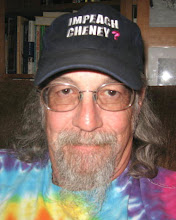Sunday 14 June 2009
by: Les Blumenthal | Visit article original @ McClatchy Newspapers

(Photo: Ldrider51)
A consortium of utilities in the Pacific Northwest once known as "Whoops," synonymous with the collapse of the nuclear power industry, wants back in the game.
Though many blame the demise of the industry on the 1979 accident at Pennsylvania's Three Mile Island, the financial meltdown of the Washington Public Power Supply System â€" WPPSS â€" became the poster child for all that went wrong.
At first the power was going to be too cheap to meter, but cost overruns, schedule delays, nagging licensing problems and safety issues in the late 1970s and 1980s brought construction of commercial nuclear power plants to a halt. Nationwide, nearly 120 nuclear power plants were canceled.
WPPSS' once ambitious plan to build five nuclear power plants in Washington state collapsed into what was then the largest municipal bond default in history: $2.25 billion. A ratepayers revolt swept across the region as the $25 billion price tag for the plants skyrocketed. Only one of the five plants was ever finished, but ratepayers are still paying for the unfinished ones.
Since renamed Energy Northwest, the supply system has now asked its 25 utility members to contribute up to $25,000 each for a preliminary study of constructing small, modular, commercial nuclear reactors.
"We recognize the value of the lessons learned, but we need to pay adequate attention to the future," said Rochelle Olson, an Energy Northwest spokeswoman. "This is clearly in the early stages and it's too soon to tell whether it will move forward."
In his letter to the member utilities, Jack Baker, Energy Northwest's vice president, said the key would be building political and public support.
"It can be done but it will require an effort," he said. "I remain optimistic about this option and believe it should be seriously considered as a future power supply option."
Energy Northwest hopes to raise $250,000 to $500,000 from its member utilities to proceed with pre-development work. It set a deadline of June 23 to hear from the utilities.
Two of the largest public utilities in Washington state, Seattle City Light and Snohomish County Public Utility District, are reportedly cool to the idea. Others haven't made up their minds.
The fallout from WPPSS lingers.
"I don't think the region is ready," said Bill Gaines, superintendent of Tacoma Power. "I wish we were. Nuclear power has to be part of any carbon solution."
With looming restrictions on power plants that produce greenhouse gases from burning fossil fuels and an emphasis on alternative energy, the nuclear industry is undergoing a rebirth.
The nation's 103 nuclear power plants generate about 20 percent of its electricity. To maintain that 20 percent level as demand grows, the Nuclear Energy Institute said, would require the construction of three nuclear plants every two years.
So far, there are 17 license applications involving 26 reactors pending before the Nuclear Regulatory Commission. Three or four more applications are expected in the next 12 to 15 months. Some licenses involve multiple reactors.
"Not all of them will be built," said Steve Kerekes, a spokesman for the Nuclear Energy Institute, an industry trade group.
If approved, the plants would be located in 16 states, most of them in the South. Many of the plants would be adjacent to existing nuclear facilities.
Even with a streamlined licensing process, Kerekes said, it could take three to four years for the Nuclear Regulatory Commission to act and four to five years to actually build a nuclear power plant. The first group of four to eight reactors could be operational in 2016 to 2018, he said.
"We are going to proceed at a very measured pace," Kerekes said.
While in the 1970s and 1980s there were dozens of designs for nuclear power plants, Kerekes said there are now fewer than half a dozen. The plants would still be large, roughly capable of producing about 1,200 megawatts of electricity, and would cost $6 billion to $8 billion to construct. One megawatt can power approximately 1,000 homes.
No one is thinking on a scale like the five nuclear plants the supply system sought to build, Kerekes said.
"We've learned," he said.
The federal government is already investing in the nuclear industry, with Congress providing $18.5 billion in loan guarantees in the 2005 version of the energy bill. That would provide enough to build three or four plants.
Democrats are generally supportive of nuclear energy development, while the Republican version of this year's energy bill calls for construction of 100 additional nuclear plants in the next 20 years.
One of the biggest stumbling blocks is what to do with the highly radioactive fuel used in the reactors. The Obama administration said it doesn't intend to finish a permanent dump for the fuel at Nevada's Yucca Mountain, even though billions of dollars already have been spent on it. Used nuclear fuel from the plants is now stored at each individual site.
Energy Northwest's lone completed nuclear plant, the Columbia Generating Station at the Hanford nuclear reservation, has been operating for nearly 25 years without major incident. The plant supplies enough electricity for roughly 1 million homes.
Energy Northwest has studied but rejected building a similar-sized plant and instead is interested in the 40-megawatt reactors being developed by an Oregon-based firm, NuScale Power. One of the small reactors, which can fit on a railroad flatcar, could be used in a rural or remote site, and eight, 12 or even 24 units could be linked together for large projects.
NuScale said the reactor design has been tested and the company will apply for design certification from the Nuclear Regulatory Commission next year. The company believes the first of its reactors could be operational by 2015 or 2016.
"We shouldn't forget history," said Olson, the Energy Northwest spokeswoman, "but this is a chance to do things differently and much better."




























No comments:
Post a Comment